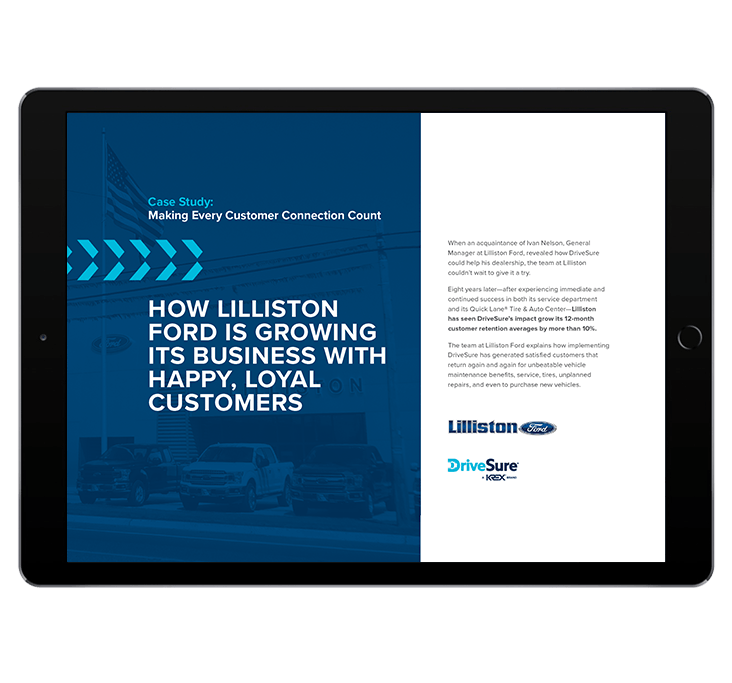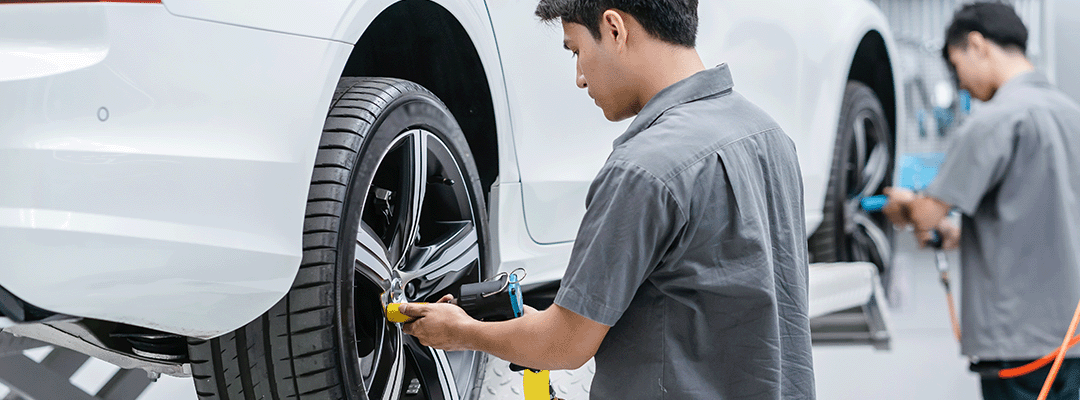The challenges posed by the inventory shortage are so pervasive that it’s already becoming difficult to remember a time when we weren’t all talking about it.
Not long ago, nobody expected dealership lots to be nearly empty, with vehicles being sold above MSRP with a 6-month wait and no test drive.
But while no one saw this coming, the same can’t be said for the next wave of challenges dealerships will soon face. Lack of inventory now will lead to some predictable issues down the road, especially for fixed operations.
The dealerships that recognize what’s coming and act accordingly will win the day tomorrow. The ones that don’t are likely to see their bottom line suffer.
Discover Lilliston Ford’s secrets to 33% service department growth.
Existing Pressures for Dealership Service
The issues coming down the pike for dealership service departments don’t live in a vacuum. They’ll be adding to challenges that have been building for some time. In fact, you likely noticed or wondered about the effects of the trends below even before the COVID-19 pandemic.
- Lengthening recommended service intervals. Gone are the days of recommended oil changes every 3 months or 3,000 miles. As technology continues to improve, vehicles are being brought to your service lane less and less often – reducing revenue opportunities as well as your chance to build a close relationship that encourages long-term customer loyalty.
- Rise in electric vehicles. With many manufacturers making big commitments for future EV sales, vehicle service is likely to change more dramatically than at any other time in the last century.
These trends would be enough to make any general manager or service director think carefully about how to plan for the future. Unfortunately, these challenges aren’t the only ones that could hurt service business over the next several years.
New Challenges on the Horizon
As new vehicles continue to be hard to come by, three things are happening that will negatively impact the demand for dealership service:
1. Dealerships are selling more used cars. Customers are more likely to bring their vehicle to the dealership for service and repairs when it’s new. Much of what they need will be covered by a warranty and they place a higher value on factory-trained technicians using high-quality parts. As such, it’s always been a bit easier to get a new-vehicle buyer to return for service than a used-vehicle buyer. With a higher percentage of your sales coming from used vehicles, you’re likely to see fewer of your buyers come back to your service lane.
2. People are delaying vehicle purchases. With people holding onto their vehicles for longer, and with less perceived value in dealership service for older vehicles, this too is likely to reduce demand for your service department.
3. Dealerships are selling more off-brand vehicles. The used sales dealerships are increasingly relying on aren’t just of older vehicles, they’re also more likely to be of vehicles from another brand. It goes without saying that customers are less likely to think of the Ford dealership for their Chevy, and the same is true for any other brand mismatch.
As you add each of these factors together and layer them on top of the pre-pandemic challenges identified above, the outlook starts to look bleak. The sales challenges your dealership faces today could very quickly become long-lasting service challenges, if they haven’t already.
But dealerships are not powerless victims of circumstance. Those that act now still have an opportunity to maintain or even grow a highly profitable service business that delights customers and keeps them coming back.
How Dealerships Can Keep Service Departments Thriving
Incentivize Service Retention
Perhaps the most intuitive way to get customers to return for service is to make it more valuable for them to do so. Service discounts and loyalty programs are commonly used to incentivize a service visit, but they aren’t the only options available to you.
At DriveSure, we empower dealerships to offer a suite of renewable benefits, such as roadside assistance and road-hazard tire protection, with vehicle purchases and service visits. This helps dealerships offer a little more value with each visit, while giving customers one more reason to return to you for their next recommended maintenance (to renew their benefits).
For more success in getting buyers to come back for that critical first service visit, consider optimizing your sales-to-service handoff with our free checklist.
Increase Focus on Tires
As the need for oil changes becomes less frequent (or nonexistent in the case of EVs), tire rotations are becoming the most frequently needed maintenance for vehicles. And tire rotations are more or less the same regardless of vehicle age or brand. The challenge is that many vehicle owners don’t think of dealerships when they think of tires…yet.
To become the first thing your customers think of when they think of tires, you need to work at it. Make sure buyers know your service center sells and services tires and include tires in your service marketing. Offerings like add-on tire warranties and the road-hazard tire protection from DriveSure can change the tire game for your dealership even more.
Bring More People Back for Repairs
Unplanned repairs are one of the most common (and least recognized) reasons service customers begin going somewhere other than the dealership for repairs and maintenance. When someone breaks down on the side of the road, convenience and speed become more important than loyalty and they’re likely to go to whoever can get them back on the road quickest.
We recently covered seven ways dealerships can overcome this, but a couple standout strategies include dealer-loyal roadside assistance, alternate transportation coverage, and service financing options.
Include Prepaid Maintenance with Purchases
Prepaid maintenance policies are a surefire way to get customers to return to service. If you can get more of your buyers to tack on a prepaid maintenance policy, you absolutely should. Unfortunately, these policies may be harder to sell right now for the same reasons that fewer buyers may be less interested in returning for service.
If that’s the case for your dealership, consider including the policies for free with vehicle purchases over the near term. The increased margins you’re likely enjoying on sales and the inevitable non-covered repair revenue you’ll earn in the future should make this a valuable investment.
Promote Certified, Pre-Owned (CPO) Vehicles
With the limited warranty that comes with CPO vehicles, customers are more likely to bring them back to the dealership for service. The more CPO vehicles you can sell, the better. And don’t forget to ensure that every customer understands their warranty coverage and value of servicing their vehicle at your dealership.
No More Surprises
The challenges of the pandemic and its follow-on effects on supply chains caught us all off guard. Take comfort from the fact that the challenges your service department will soon face are predictable. You have the power and the knowledge to act early to overcome them.
CASE STUDY
Service Department Grows 33%
Discover how Lilliston Ford uses DriveSure to crush the competition and keep service customers coming back again and again.


